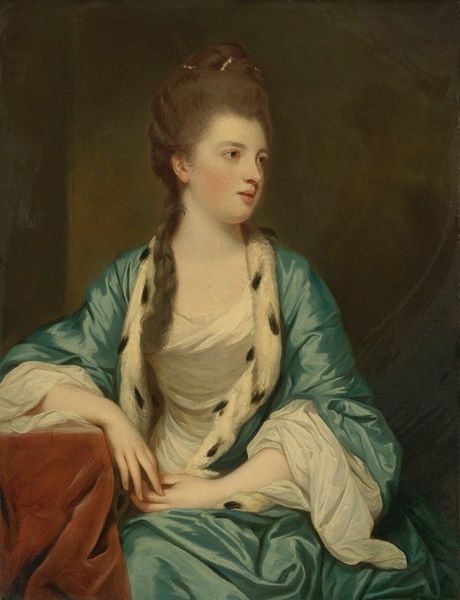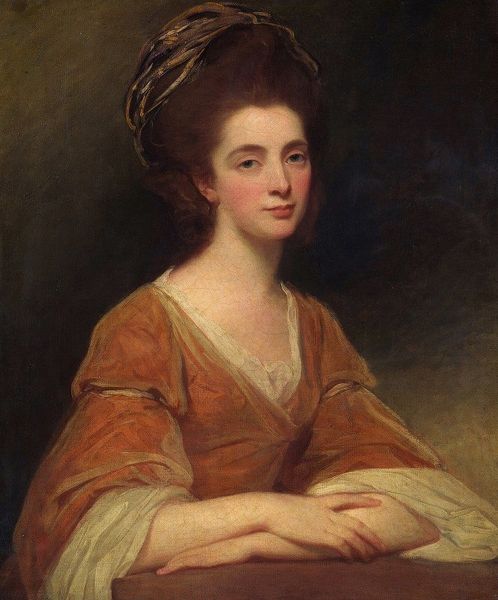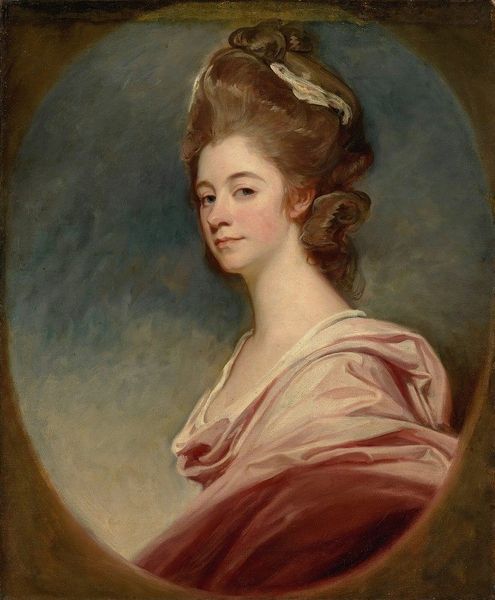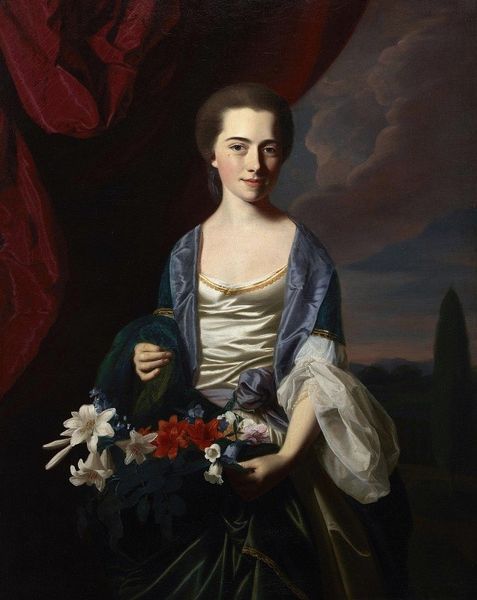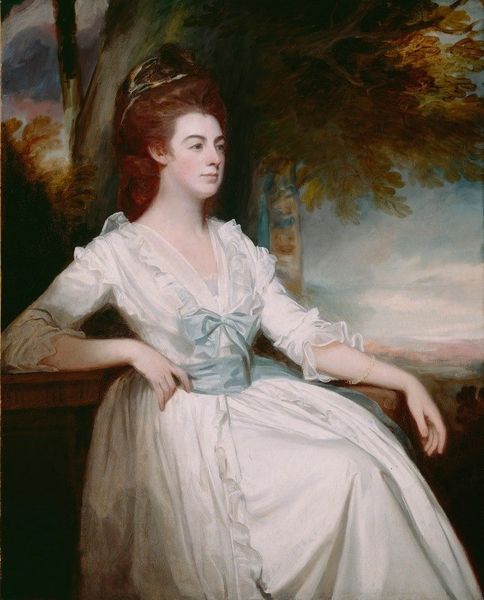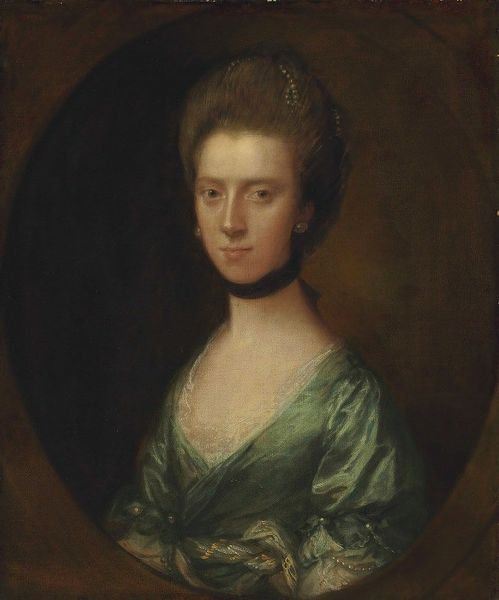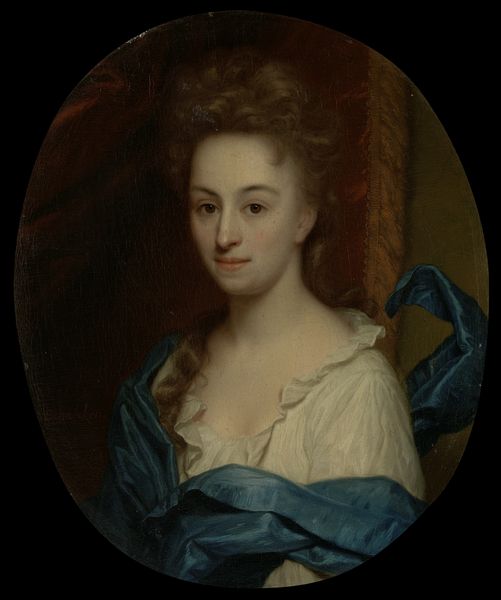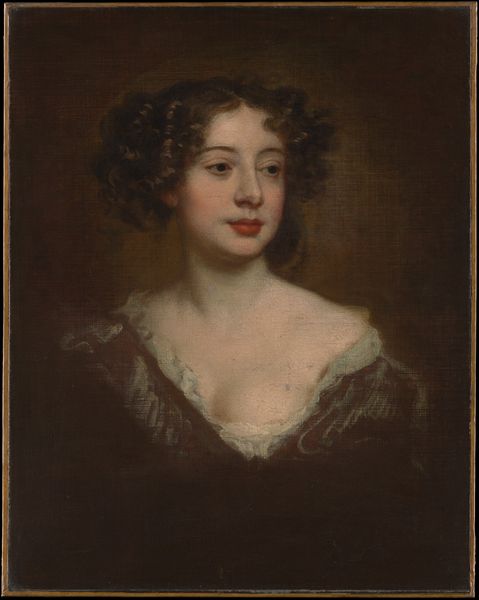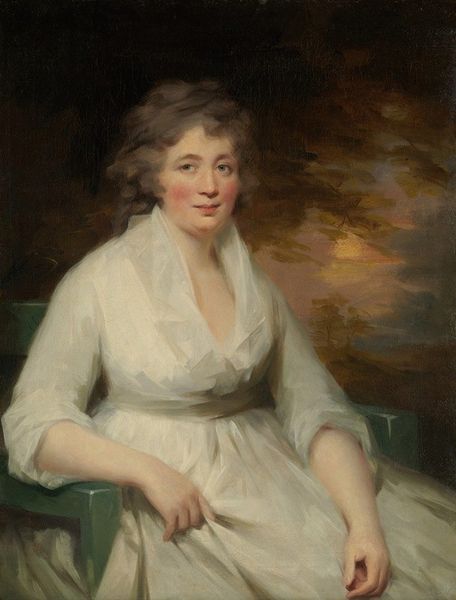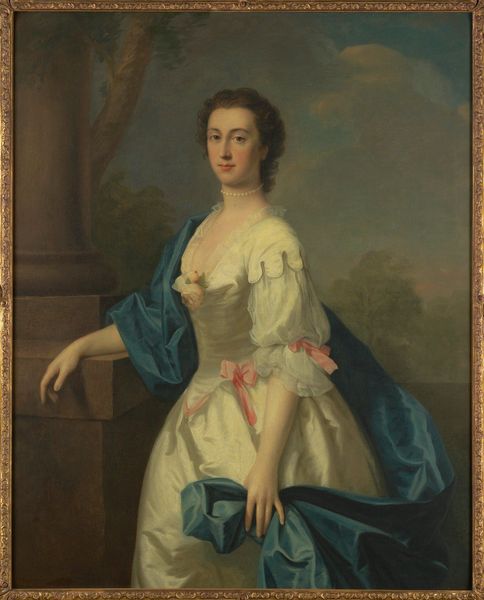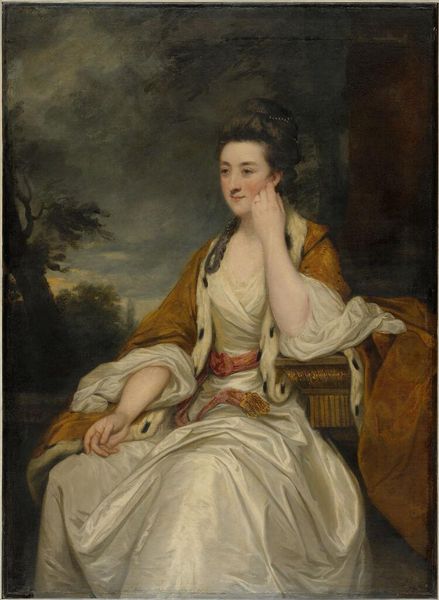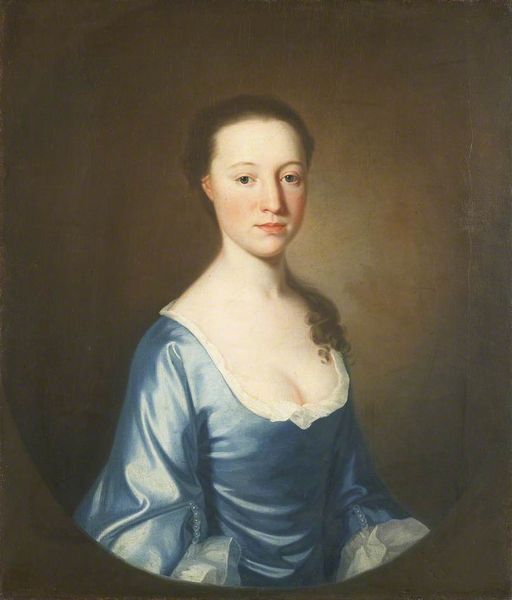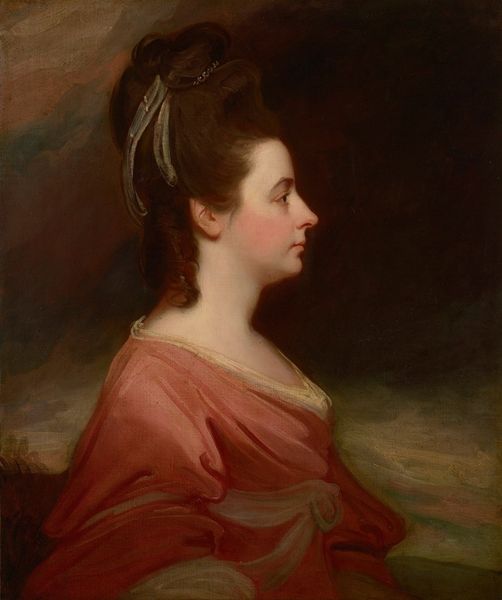
painting, oil-paint
#
portrait
#
painting
#
oil-paint
#
history-painting
#
academic-art
#
rococo
Copyright: Public Domain: Artvee
Editor: This is John Singleton Copley’s portrait of "Mrs. Robert Hyde". I find its Rococo style quite striking. It has a real formality, almost coolness, in its representation. What do you see in this piece? Curator: I see a compelling intersection of identity, gender, and power within the visual language of the 18th century. This portrait invites us to consider the role of women within colonial American society and how their representation was carefully constructed. Copley's technique seems intended to convey a very particular type of social status. Who *gets* to be seen in that moment, and *how*? Editor: How do you mean? Curator: Well, the formality you noticed, combined with the subject's controlled gaze and elegant clothing, speaks to the expectations placed on women of a certain class during this era. It also represents how wealth and status were performed, especially through the controlled display of the female body. Note the pearl choker, the delicate fabric. All these elements are loaded signifiers. Editor: So it’s not just a pretty picture, but a statement? Curator: Exactly. Art often functions as a kind of social mirror, reflecting and reinforcing dominant power structures, particularly with the representation of gender roles. Think of this portrait as part of a larger narrative about who holds power, and who is allowed to be visible, within a very specific social landscape. Editor: That gives me a lot to think about – it's more complex than I initially imagined. Curator: Indeed. Looking closely at these portraits allows us to deconstruct not only the artistry but also the socio-political ideologies that shaped them. We see it now through very different, contemporary eyes. Editor: I will certainly approach these kinds of portraits with more understanding now.
Comments
No comments
Be the first to comment and join the conversation on the ultimate creative platform.
